Xucun Yan
A Novel Exploitative and Explorative GWO-SVM Algorithm for Smart Emotion Recognition
Jan 05, 2023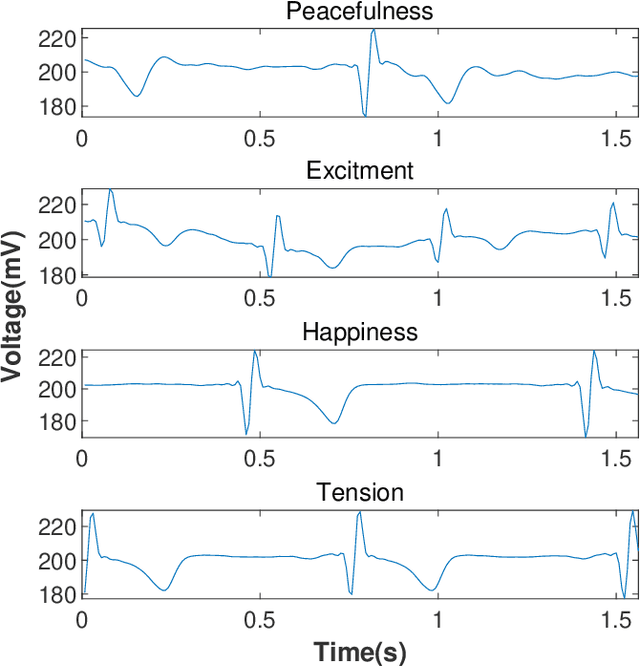
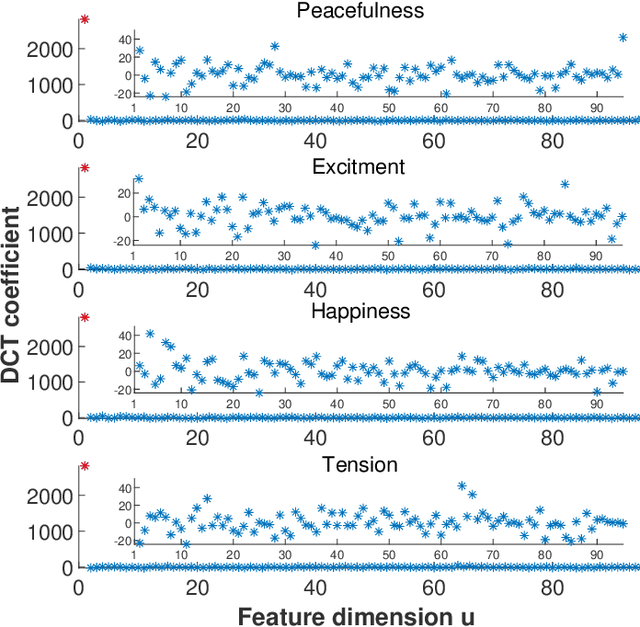
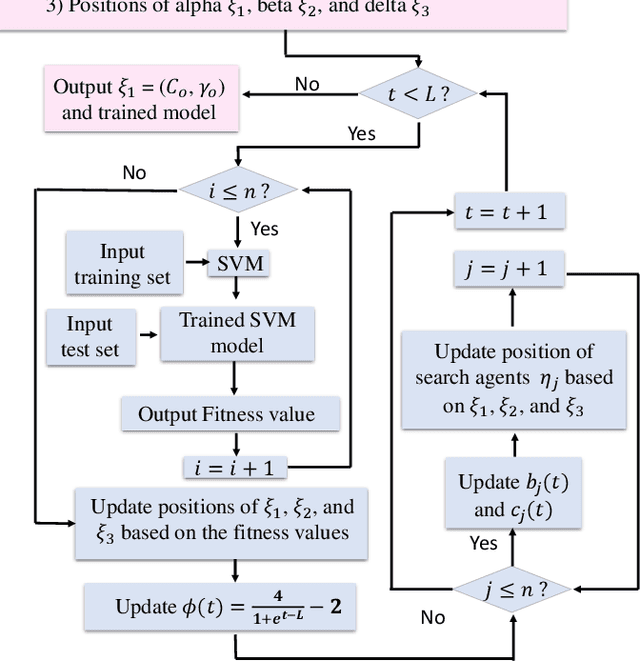
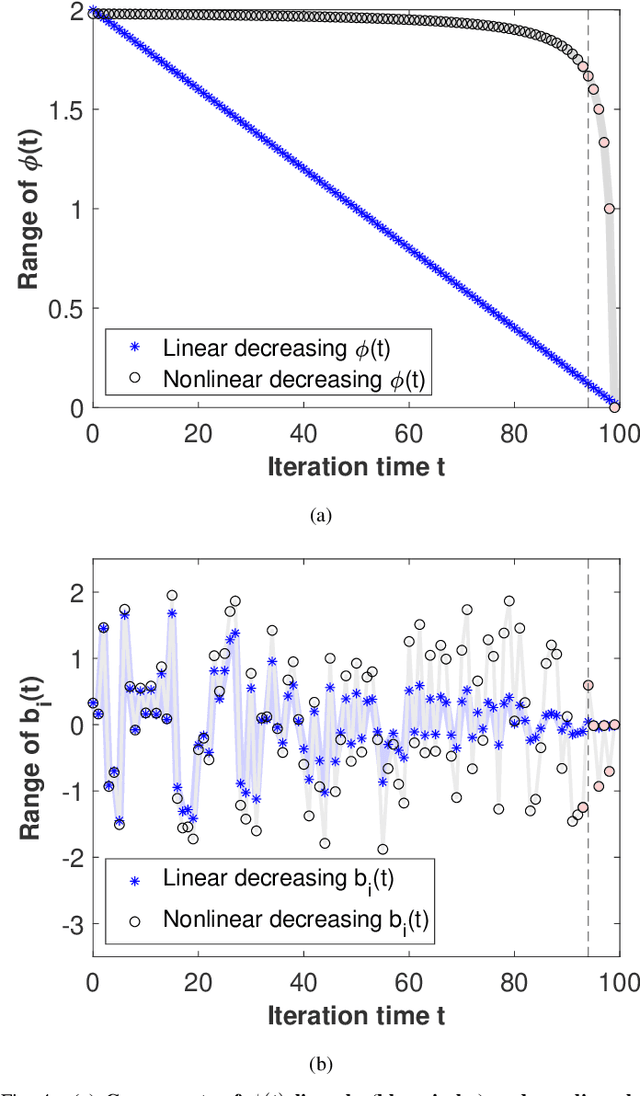
Abstract:Emotion recognition or detection is broadly utilized in patient-doctor interactions for diseases such as schizophrenia and autism and the most typical techniques are speech detection and facial recognition. However, features extracted from these behavior-based emotion recognitions are not reliable since humans can disguise their emotions. Recording voices or tracking facial expressions for a long term is also not efficient. Therefore, our aim is to find a reliable and efficient emotion recognition scheme, which can be used for non-behavior-based emotion recognition in real-time. This can be solved by implementing a single-channel electrocardiogram (ECG) based emotion recognition scheme in a lightweight embedded system. However, existing schemes have relatively low accuracy. Therefore, we propose a reliable and efficient emotion recognition scheme - exploitative and explorative grey wolf optimizer based SVM (X - GWO - SVM) for ECG-based emotion recognition. Two datasets, one raw self-collected iRealcare dataset, and the widely-used benchmark WESAD dataset are used in the X - GWO - SVM algorithm for emotion recognition. This work demonstrates that the X - GWO - SVM algorithm can be used for emotion recognition and the algorithm exhibits superior performance in reliability compared to the use of other supervised machine learning methods in earlier works. It can be implemented in a lightweight embedded system, which is much more efficient than existing solutions based on deep neural networks.
Design of an Internet of Things System for Smart Hospitals
Apr 06, 2022



Abstract:With the fast advancement of smart devices and Internet of Things (IoT) technologies, certain established situations are opening up new avenues of exploration. Particularly in the sphere of healthcare, the diverse and big population, the complicated and professional data, and the stringent environmental requirements for certain medical scenes and equipment all impose exceptionally high standards on hospital administration. As a result, an effective and secure Internet of things system is critical. This article proposes an IoT system that might be used in hospitals for a variety of purposes. This system collects data by LoRa, Wi-Fi, and other ways, uploads it to a cloud platform for processing over a secure connection, and then feeds it back to users in real-time via the user interface. This system enables precise indoor localization through the use of UWB, ECG signal detection, environmental monitoring, and data on people flow.
Significant Low-dimensional Spectral-temporal Features for Seizure Detection
Feb 13, 2022


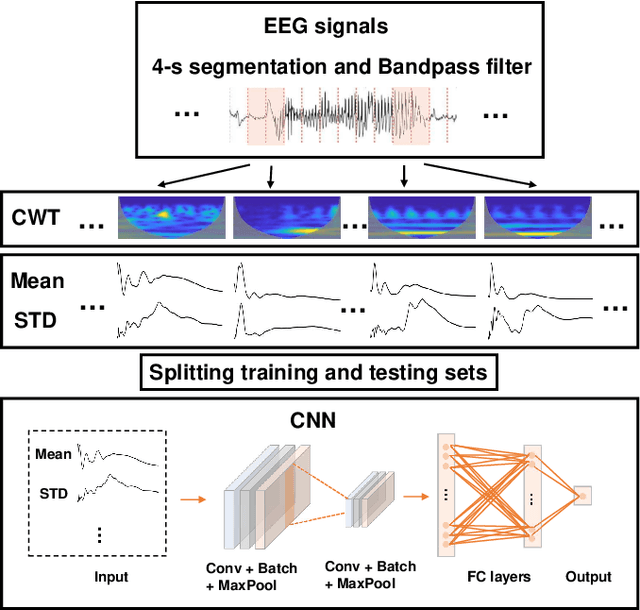
Abstract:Seizure onset detection in electroencephalography (EEG) signals is a challenging task due to the non-stereotyped seizure activities as well as their stochastic and non-stationary characteristics in nature. Joint spectral-temporal features are believed to contain sufficient and powerful feature information for absence seizure detection. However, the resulting high-dimensional features involve redundant information and require heavy computational load. Here, we discover significant low-dimensional spectral-temporal features in terms of mean-standard deviation of wavelet transform coefficient (MS-WTC), based on which a novel absence seizure detection framework is developed. The EEG signals are transformed into the spectral-temporal domain, with their low-dimensional features fed into a convolutional neural network. Superior detection performance is achieved on the widely-used benchmark dataset as well as a clinical dataset from the Chinese 301 Hospital. For the former, seven classification tasks were evaluated with the accuracy from 99.8% to 100.0%, while for the latter, the method achieved a mean accuracy of 94.7%, overwhelming other methods with low-dimensional temporal and spectral features. Experimental results on two seizure datasets demonstrate reliability, efficiency and stability of our proposed MS-WTC method, validating the significance of the extracted low-dimensional spectral-temporal features.
A Wearable ECG Monitor for Deep Learning Based Real-Time Cardiovascular Disease Detection
Jan 25, 2022



Abstract:Cardiovascular disease has become one of the most significant threats endangering human life and health. Recently, Electrocardiogram (ECG) monitoring has been transformed into remote cardiac monitoring by Holter surveillance. However, the widely used Holter can bring a great deal of discomfort and inconvenience to the individuals who carry them. We developed a new wireless ECG patch in this work and applied a deep learning framework based on the Convolutional Neural Network (CNN) and Long Short-term Memory (LSTM) models. However, we find that the models using the existing techniques are not able to differentiate two main heartbeat types (Supraventricular premature beat and Atrial fibrillation) in our newly obtained dataset, resulting in low accuracy of 58.0 %. We proposed a semi-supervised method to process the badly labelled data samples with using the confidence-level-based training. The experiment results conclude that the proposed method can approach an average accuracy of 90.2 %, i.e., 5.4 % higher than the accuracy of conventional ECG classification methods.
 Add to Chrome
Add to Chrome Add to Firefox
Add to Firefox Add to Edge
Add to Edge